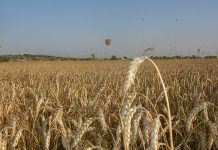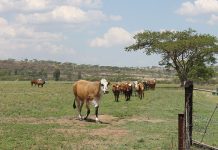However, the more I learned about agriculture and the global food system, the less certain I became about what I thought I knew. In this week’s issue, we report on the recent Farmbiz AgriBusiness Africa Conference (see pg 15). At the conference, Pan African Farmers’ Organisation president, Dr Theo de Jager, a stalwart of organised and commercial agriculture in South Africa, referred to smallholder farming as a poverty-trap. Smallholder farming was “a state of mind more than it is a
state of agriculture”, he said.
I cannot argue with De Jager about the proven efficiencies of large-scale commercial farming. I appreciate its scale and productivity benefits, and I am grateful to commercial farmers for ensuring that South Africa is food-secure on a national level. But I would argue that there are some serious shortcomings in our food system that cannot be addressed by commercial farming alone.
The frequent but unverified claim that 20% of SA farmers produce 80% of the agricultural production is as frightening as it is impressive. Although these farmers are good at what they do, things start falling apart when we consider food security at a household level – more than a quarter of the population cannot afford to buy food produced by these farmers.
It is estimated that 28% of South Africans are at risk of hunger, and 26% regularly experience hunger. Growing the commercial agriculture sector will create jobs and encourage economic growth, which in the long term could benefit those who are poor and hungry. In the short term, however, a properly implemented subsistence and smallholder farming strategy has the potential to lift at least those people living in rural areas and facing food insecurity out of the poverty trap.
Smallholder farming is not a poverty trap. It is a stepping stone. Hans Binswanger, extraordinary professor of the Department of Agricultural Economics at the University of Pretoria, said it best: “People often say if you focus on smallholders the programmes will not yield viable farms. But we forget that those people who stand to benefit from investment in smallholder farming often live below the poverty line. If we could bring a household living below the poverty line to a level of income twice that of the poverty line, it will be a great thing for that household. We call this ‘generating a livelihood’.”











